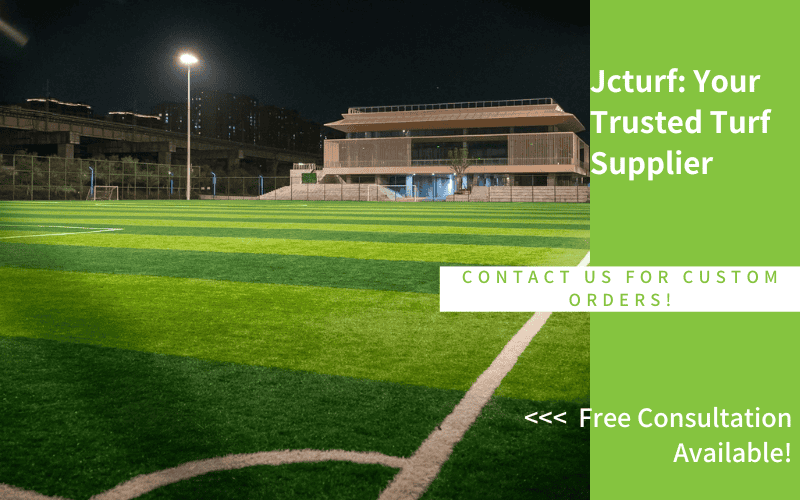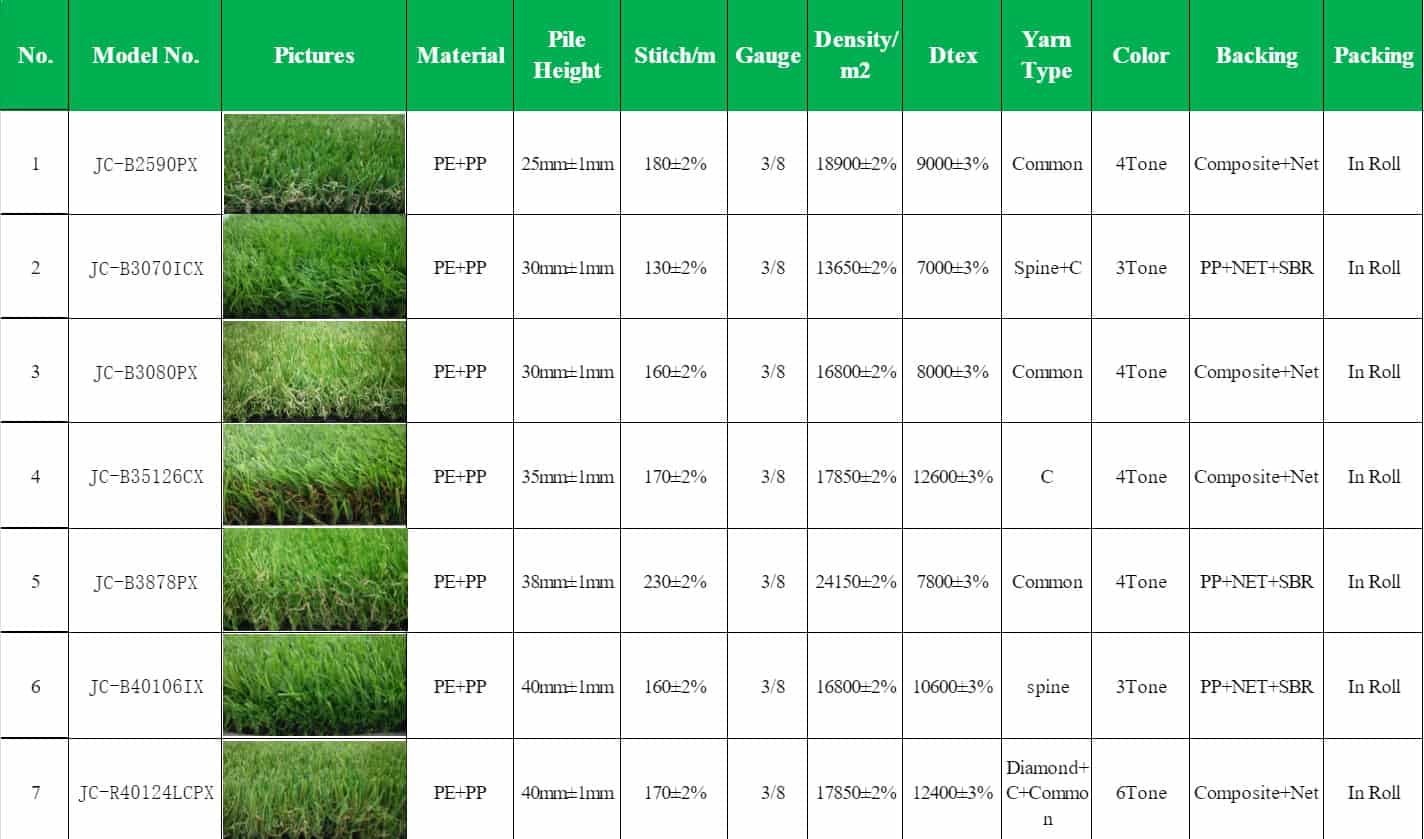A turf football field is built on a multi-layered system designed to support performance, safety, and durability. Underneath the turf, you’ll typically find infill, a shock-absorbing pad, a crushed stone base, and a compacted soil subgrade. Each layer plays a key role in drainage, impact protection, and long-term stability.
In this guide, we’ll break down the main components found under turf football fields and explain why they matter specifically for the game of football. You’ll learn how drainage systems are designed to prevent flooding, what optional features like heating coils and geotextile fabric do, and whether every field really needs every layer. Whether you’re planning a stadium or just curious how football turf is built, this article gives you the full picture—from the ground up.
What Goes Under a Turf Football Field? (Quick Overview)
Underneath a turf football field, there are multiple layers working together to support performance, safety, and durability. These layers usually include a shock-absorbing pad, a compacted stone base, a drainage system, and sometimes a protective fabric or heating element. Right below the turf itself, infill materials like rubber or sand help with cushioning and ball control. Each of these layers plays a specific role to make sure the field feels natural, drains well, and reduces the risk of injuries. Understanding this structure is key if you’re building or maintaining a synthetic football pitch.
Main Layers Beneath Turf Football Fields
Turf football fields are built on layered foundations that support safety, drainage, and long-term play. A typical field includes an infill layer, a shock pad for impact absorption, a crushed stone base, and a compacted soil subgrade. In the sections below, we’ll explain each of these layers and how they work together to create a stable, game-ready surface.
Infill Layer
This is the material you see between the blades of turf. It’s usually a mix of rubber granules, silica sand, or coated sand. Infill provides shock absorption and helps players get proper traction on the field. It also supports the artificial grass fibers, keeping them upright and improving ball behavior. For football, the right infill balance is essential to reduce injuries and maintain playability.
Shock Pad (or Elastic Layer)
Installed directly beneath the turf and infill, the shock pad adds a vital cushioning effect. It protects players by reducing the impact from running, jumping, and falling. These pads can be made from foam, rubber, or recycled materials and are either pre-formed or poured in place. Football fields—especially those used for competitive or youth play—often require shock pads to meet safety standards.
Base Layer (Crushed Stone or Aggregate)
This is the load-bearing layer that supports everything above it. It’s made from compacted gravel or crushed stone and shaped to promote drainage. The base ensures the surface remains level and prevents shifting over time. A well-prepared base is essential for keeping the football field stable, even during heavy use or bad weather.
Subgrade (Compacted Soil or Engineered Fill)
At the bottom of the structure lies the subgrade—the foundation of the entire system. It’s typically compacted native soil or a layer of engineered fill. This layer must be firm and properly graded to avoid future sinking or unevenness. While it may seem basic, a solid subgrade is critical for the long-term durability of any turf football field.
Why These Layers Matter Specifically for Football Fields
A football field isn’t just a flat surface with fake grass—it’s a high-impact sports system. Every layer beneath the turf has to handle fast footwork, sudden stops, and hard falls. Unlike landscaping turf or playgrounds, football fields must absorb intense pressure without shifting, sinking, or flooding. If even one layer is missing or poorly built, the entire field can become unsafe or unusable. That’s why football-specific turf systems always rely on shock pads, proper infill, stable bases, and engineered drainage. These elements work together to protect players and ensure the field performs consistently—game after game, season after season.
How Drainage Works Underneath Football Turf Fields
Good drainage is one of the most important features of a turf football field, but it’s often overlooked. A well-designed system prevents water from pooling on the surface, keeps the field playable after rain, and protects the structure underneath. In this section, we’ll explain how drainage systems work, why they matter, and what design options are commonly used.
How the Drainage System Works
Drainage under turf football fields relies on gravity and layered materials to move water away from the surface. Water seeps through the turf and infill, flows down to the crushed stone base, and is then guided through drainage pipes or into a porous sub-base. Some systems include horizontal drainage channels, while others use vertical drains combined with sloped grading. The goal is simple: remove water fast and evenly.
Why Drainage Is So Important for Football Fields
If water can’t drain properly, the field becomes slippery, uneven, and even dangerous. Poor drainage causes puddles, mud buildup, and long-term structural damage. For football specifically—where fast turns, tackles, and continuous running are common—wet fields increase the risk of injuries and game cancellations. A solid drainage system keeps the surface consistent and safe, no matter the weather.
Common Drainage Designs Used Under Turf
There are several methods used depending on the field’s location, budget, and climate. Perforated pipes are often placed in a gravel trench beneath the field, forming a horizontal network to collect water. Some fields use vertical drains spaced across the base layer, while others rely on sloped layers of stone that direct water naturally. For high-level stadiums, hybrid systems combine these elements for maximum performance.
Optional Components Below Football Turf Fields
While most football turf systems include a standard set of layers, some fields add extra components for specific performance or climate needs. These optional layers aren’t always required, but they can make a big difference in extreme conditions or professional-grade installations. Below are two common extras you might find under certain football fields.
Heating Systems for Cold-Weather Fields
In cold or snowy climates, some football fields include underground heating systems. These use pipes or electric coils to warm the turf and prevent snow buildup or frozen surfaces. It helps extend the playable season and reduce field closures during winter months. These systems are common in pro-level stadiums or northern regions.
Geotextile Fabric Layer
This thin fabric layer sits between the soil and the stone base. It prevents soil from mixing with the gravel and helps keep the foundation stable over time. While not always necessary, it’s often used in soft soil areas or where long-term drainage performance is a concern.
Do Turf Football Fields Need All These Layers?
Not always. While professional or high-traffic football fields usually include every key layer—like infill, shock pads, drainage, and a solid base—some recreational or school fields may use a simplified system. For example, fields with lighter use might skip the shock pad or use a basic gravel base instead of a fully engineered one. That said, cutting corners can lead to safety issues or shorten the lifespan of your turf. If you’re unsure what your field really needs, it’s best to consult with a turf specialist before making design decisions.
Conclusion: Every Layer Matters for a Turf Football Field
Building a turf football field isn’t just about laying synthetic grass—it’s about creating a high-performing, safe, and lasting sports surface. Each layer beneath the turf plays a specific role, from managing shock and drainage to keeping the field stable over time. Whether you’re planning a professional stadium or a school practice ground, knowing what goes underneath is key to making smart design choices. Keep these essentials in mind, and you’ll build a field that performs well, stays safe, and stands the test of time.


